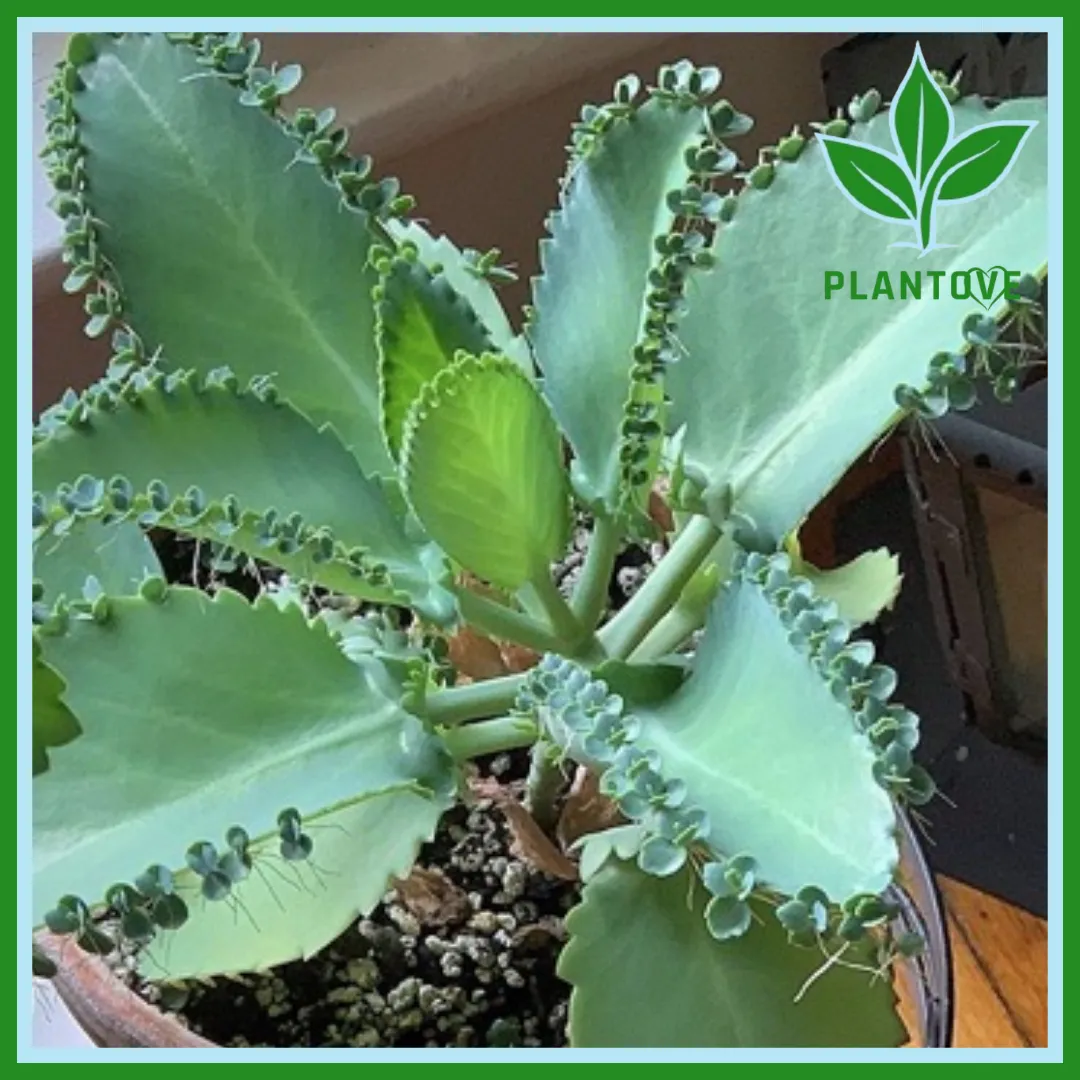The Mother of Thousands (Kalanchoe daigremontiana), also known as the Chandelier Plant or Mother of Thousands, is a unique and captivating succulent that has garnered popularity among gardening enthusiasts and plant collectors. Its striking appearance and prolific reproductive capabilities make it a fascinating addition to any collection. This comprehensive guide will delve into the specifics of caring for this plant, its benefits, and potential risks, ensuring you have all the information you need to maintain a healthy and vibrant Mother of Thousands.
Introduction to Mother of Thousands
The Mother of Thousands is native to Madagascar and is part of the Crassulaceae family. This succulent is renowned for its ability to produce numerous plantlets, or “babies,” along the edges of its leaves. These offshoots readily fall off and take root, allowing the plant to spread rapidly. The Mother of Thousands is often appreciated for its aesthetic appeal and its role in creating a lush, green environment.
Origins and History
The plant’s origins trace back to Madagascar, where it thrives in the warm, tropical climate. It has adapted well to various environments outside its native habitat and has become a popular choice in many regions around the world. Its ability to proliferate rapidly has led to its widespread cultivation and fascination among plant lovers.
Types and Varieties of Mother of thousands plant
Several varieties of the Mother of Thousands exist, each with unique characteristics:
- Kalanchoe daigremontiana: The most common type, characterized by its broad, triangular leaves with serrated edges. This variety is known for its prolific production of plantlets along the leaf margins.
- Kalanchoe tetraphylla: This variety has a more compact growth habit compared to Kalanchoe daigremontiana. Its leaves are smaller and less serrated, but it still produces plantlets in abundance.
- Kalanchoe pinnata: Often confused with Kalanchoe daigremontiana, this variety features plantlets along its leaves but differs slightly in leaf shape and coloration.
Benefits of Growing Mother of thousands plant
The Mother of Thousands offers several benefits, making it a desirable plant for both novice and experienced gardeners:
- Low Maintenance: One of the biggest advantages of this plant is its low maintenance requirements. It thrives with minimal attention, making it ideal for busy individuals or those new to gardening.
- Air Purification: Like many succulents, the Mother of Thousands contributes to improved indoor air quality. It absorbs carbon dioxide and releases oxygen, which can enhance the air quality in your home.
- Aesthetic Appeal: The plant’s unique appearance adds visual interest to any plant collection. Its fleshy leaves and the cascading plantlets create an attractive display, whether in pots, hanging baskets, or garden beds.
- Propagation: The Mother of Thousands is renowned for its ability to propagate easily. The plantlets that fall off the main plant quickly take root and grow into new plants. This feature allows you to share the plant with others or expand your collection effortlessly.
- Educational Value: For those interested in plant reproduction and growth, the Mother of Thousands offers an excellent opportunity to observe a fascinating propagation process. It serves as a practical example of how plants can reproduce and spread.
Mother of Thousands Plant Care
To ensure your Mother of Thousands remains healthy and vibrant, follow these care guidelines:
- Light Requirements: The Mother of Thousands thrives in bright, indirect sunlight. It can adapt to lower light conditions but may produce fewer offshoots. For optimal growth, place the plant in a location where it receives bright, filtered light. If grown outdoors, provide partial shade to prevent leaf scorch.
- Watering: This succulent has low water needs. Water the plant thoroughly, allowing the soil to dry out completely between waterings. Overwatering can lead to root rot, a common issue with succulents. To prevent this, ensure that the plant is in well-draining soil and that the pot has drainage holes.
- Soil: Use a well-draining soil mix, such as a cactus or succulent mix. This type of soil allows excess water to drain away from the roots, preventing waterlogging and root rot.
- Temperature and Humidity: The Mother of Thousands prefers warm temperatures, ideally between 65°F and 80°F (18°C to 27°C). It is not frost-tolerant, so protect it from cold drafts and temperatures below 50°F (10°C). Average indoor humidity is usually sufficient for this plant.
- Fertilizing: Feed the plant with a balanced, water-soluble fertilizer once a month during the growing season (spring and summer). Reduce feeding in the fall and winter when the plant’s growth slows down. Avoid over-fertilizing, as this can lead to excessive, weak growth.
- Pruning: Regular pruning helps maintain the plant’s shape and health. Remove dead or damaged leaves to promote new growth and prevent disease. You can also trim back excess plantlets if you want to control the plant’s spread.
- Repotting: The Mother of Thousands generally does not require frequent repotting. However, if the plant becomes root-bound or outgrows its container, repot it into a slightly larger pot with fresh soil. Spring or early summer is the best time for repotting.
Potential Risks and Considerations
- Toxicity: The Mother of Thousands is mildly toxic if ingested. It contains compounds that can cause gastrointestinal upset in humans and pets. Keep the plant out of reach of children and animals, and seek medical advice if ingestion occurs.
- Invasive Nature: The plant’s rapid propagation can be both a benefit and a challenge. In some regions, it may become invasive, outcompeting native plants. Regular pruning and management are necessary to prevent it from overtaking other plants in your garden.
- Legal Issues: In certain areas, the Mother of Thousands is considered an invasive species, and its cultivation may be regulated or prohibited. Check local guidelines and regulations before planting to avoid potential legal issues.
Uses of the Mother of thousands plant
- Ornamental Uses: The Mother of Thousands is often used for decorative purposes due to its unique appearance. It can be grown in pots, hanging baskets, or garden beds to create an eye-catching display.
- Medicinal Uses: In traditional medicine, the Mother of Thousands has been used for various purposes, including treating skin conditions and digestive issues. However, its medicinal use is not widely documented, and it is crucial to consult a healthcare professional before using it for any therapeutic purposes.
- Environmental Impact: As an invasive species in some areas, the Mother of Thousands can negatively impact local ecosystems. It can outcompete native plants and disrupt local biodiversity. Consider the environmental impact when planting this species and manage its growth responsibly.
How to Encourage More Offshoots
- Optimal Light Conditions: Ensure the plant receives adequate light to stimulate growth. More light can encourage increased plantlet production. If grown indoors, consider using grow lights to supplement natural light.
- Proper Watering: Maintain a balanced watering routine. Avoid overwatering, which can lead to root rot, and ensure the plant is in well-draining soil to support healthy growth.
- Regular Pruning: Trim back excess growth to encourage the plant to focus its energy on producing new offshoots. Removing old or damaged leaves can also promote healthier growth.
- Healthy Soil: Use fresh, well-draining soil to support strong root development. Healthy roots contribute to overall plant health and productivity.
Conclusion
The Mother of Thousands is a captivating and low-maintenance succulent that can add a unique touch to your home or garden. Its easy care requirements and striking appearance make it a favorite among plant enthusiasts. However, it’s important to be aware of its potential risks, such as toxicity and invasive behavior, and manage its growth accordingly. By following the care tips and understanding the plant’s characteristics, you can successfully incorporate this fascinating succulent into your plant collection and enjoy its many benefits.
Whether you’re a seasoned gardener or a novice plant enthusiast, the Mother of Thousands offers a rewarding and visually appealing addition to your collection. With proper care and attention, you can enjoy the beauty and benefits of this remarkable plant while managing its growth responsibly.

